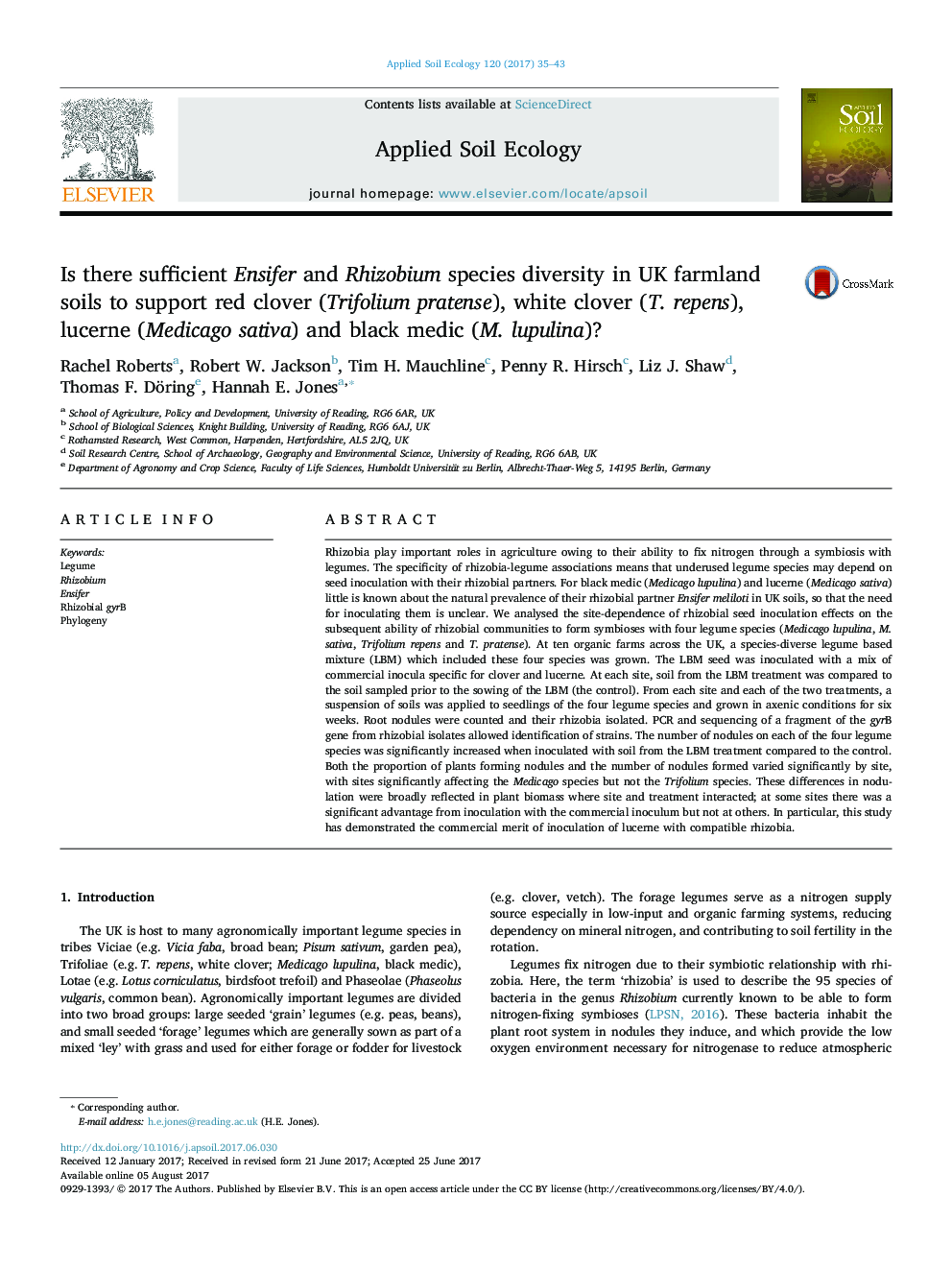| کد مقاله | کد نشریه | سال انتشار | مقاله انگلیسی | نسخه تمام متن |
|---|---|---|---|---|
| 5742569 | 1617764 | 2017 | 9 صفحه PDF | دانلود رایگان |

- Farm rhizobia communities vary; some lack lucerne and black medic-compatible Ensifer species.
- Red and white clover nodulated successfully but formed more nodules in the rhizobia treated soil.
- The gyrB sequence of the rhizobial genome differentiated between Rhizobium and Ensifer strains.
- Naturalised Ensifer adhaerens, E. meliloti, and E. medicae infected both black medic and lucerne.
Rhizobia play important roles in agriculture owing to their ability to fix nitrogen through a symbiosis with legumes. The specificity of rhizobia-legume associations means that underused legume species may depend on seed inoculation with their rhizobial partners. For black medic (Medicago lupulina) and lucerne (Medicago sativa) little is known about the natural prevalence of their rhizobial partner Ensifer meliloti in UK soils, so that the need for inoculating them is unclear. We analysed the site-dependence of rhizobial seed inoculation effects on the subsequent ability of rhizobial communities to form symbioses with four legume species (Medicago lupulina, M. sativa, Trifolium repens and T. pratense). At ten organic farms across the UK, a species-diverse legume based mixture (LBM) which included these four species was grown. The LBM seed was inoculated with a mix of commercial inocula specific for clover and lucerne. At each site, soil from the LBM treatment was compared to the soil sampled prior to the sowing of the LBM (the control). From each site and each of the two treatments, a suspension of soils was applied to seedlings of the four legume species and grown in axenic conditions for six weeks. Root nodules were counted and their rhizobia isolated. PCR and sequencing of a fragment of the gyrB gene from rhizobial isolates allowed identification of strains. The number of nodules on each of the four legume species was significantly increased when inoculated with soil from the LBM treatment compared to the control. Both the proportion of plants forming nodules and the number of nodules formed varied significantly by site, with sites significantly affecting the Medicago species but not the Trifolium species. These differences in nodulation were broadly reflected in plant biomass where site and treatment interacted; at some sites there was a significant advantage from inoculation with the commercial inoculum but not at others. In particular, this study has demonstrated the commercial merit of inoculation of lucerne with compatible rhizobia.
Journal: Applied Soil Ecology - Volume 120, November 2017, Pages 35-43